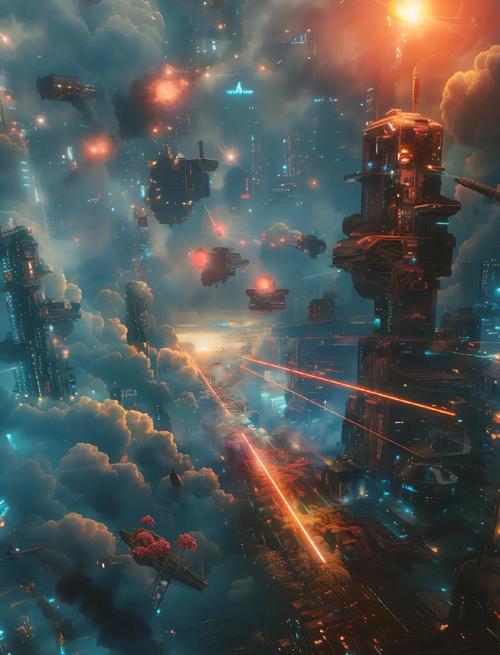Image Generation: The Journey into the Digital Realm of Visual Creation
 summary:
The journey into the digital realm of visual creation through image generation explores th...
summary:
The journey into the digital realm of visual creation through image generation explores th... The journey into the digital realm of visual creation through image generation explores the intersection of technology and art. It involves using advanced algorithms and machine learning techniques to create digital images that range from simple graphics to complex, realistic-looking scenes. This process involves understanding the interplay of colors, shapes, and textures to create visually appealing images that are both artistically unique and technologically advanced.
In the realm of computer science and digital technology, image generation has emerged as a fascinating field, paving the way for a new era of visual creation. It involves the automatic generation of digital images using algorithms and various techniques that replicate the process of human creativity. As we delve into this intricate field, we embark on a journey into the digital realm of visual creation.
What is Image Generation?
Image generation is the process of creating digital images using computers and various software tools. It involves techniques that range from simple to complex algorithms that generate realistic-looking images. These images can be still or animated, and can be as simple as a line drawing or as complex as a highly detailed 3D scene. The field of image generation encompasses various techniques such as computer graphics, machine learning, artificial intelligence, and more.
Why is Image Generation Important?
Image generation has numerous applications in various fields. It is used in areas such as computer graphics, gaming, movie production, advertising, and many other industries. With the advent of deep learning and artificial intelligence, image generation has become more sophisticated and capable of generating highly realistic images that mimic natural scenes. This has opened up new avenues for creative expression and has revolutionized the way we create visual content.
How Does Image Generation Work?
Image generation involves several steps that range from data collection to image rendering. Here’s a simplified overview of the process:
1、Data Collection: The first step in image generation is data collection. This involves gathering images from various sources such as databases, the internet, or even physical objects using cameras.
2、Preprocessing: The collected images undergo preprocessing to enhance their quality and prepare them for further processing. This step involves techniques such as image enhancement, noise removal, and color correction.
3、Feature Extraction: In this step, algorithms extract key features from the images that are important for generating new images. These features could include edges, contours, textures, and more.
4、Model Training: Using machine learning techniques, models are trained to generate new images based on the extracted features. These models learn from a large dataset of images and are able to generate new ones that resemble the training data.
5、Image Generation: Once the model is trained, it can be used to generate new images. This can be achieved through various techniques such as random sampling, conditional generation, or even user-guided generation.
6、Postprocessing: The generated images undergo postprocessing to enhance their quality and make them more suitable for the intended application. This step may involve techniques such as image sharpening, color correction, or even adding details to enhance realism.
The Future of Image Generation
With the rapid advancements in technology, image generation is poised to make significant advancements in the future. The integration of deep learning and artificial intelligence will further refine the process and enable the generation of even more realistic images. Additionally, new techniques such as generative adversarial networks (GANs) have emerged as powerful tools for image generation, paving the way for even more sophisticated applications.
Moreover, image generation will continue to revolutionize various industries such as gaming, movie production, advertising, and more. It will enable creators to generate realistic-looking content with ease, enabling them to explore new avenues of creativity and expression.
In conclusion, image generation represents a fascinating journey into the digital realm of visual creation. It offers an array of opportunities for creators to explore new avenues of creativity and expression while revolutionizing various industries along the way. As we delve deeper into this field, we are poised to witness significant advancements that will further refine the process and enable the creation of even more realistic and compelling digital images.

